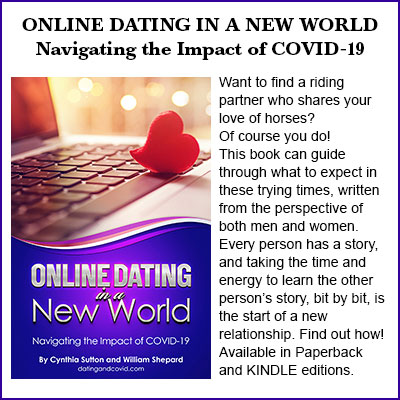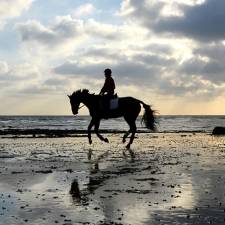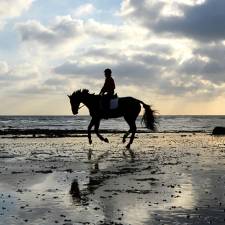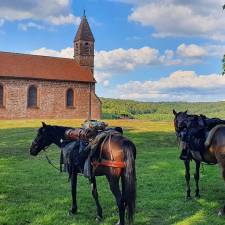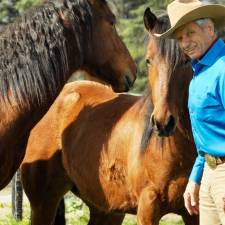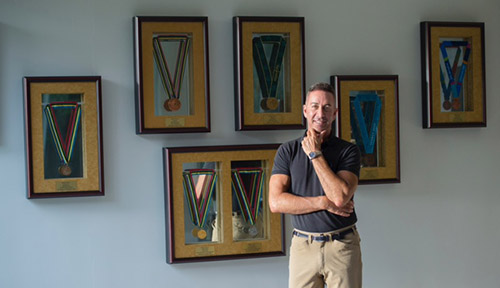
By Robert Dover
Today, I get asked two questions all the time:
• “ How can I become successful and make my riding dreams come true when I do not have the money I need for horses, training, and competing?”
• “How can I get a sponsor?”
These are both legitimate questions, especially in a time when a great horse may cost hundreds of thousands, if not millions, of dollars. I always consider the person who asks me these questions and that rider’s ultimate goal, whether it is the Olympics or to be a good professional trainer in a specific area of the country. I explain the hard work, dedication, focus, humility, sense of humor, honesty, and grit required of anyone seeking to be excellent in any endeavor in life. I also emphasize the need to love and embrace the road being traveled—its highs and lows, successes and failures—in order to find true happiness along the way.
Finally, I tell it like it is, explaining that there are normally two reasons someone chooses to sponsor a rider: Either the sponsor has an emotional attachment to that person and wishes to help as a parent might help a child, or the sponsor is attracted to the prior and potential achievements of the rider and wants to become a part of that success story.
Caroline Muldoon helped me in 1980 out of love and a belief in my potential. Later in my career, other wonderful people, including Walter and Mary Anne McPhail and Jane Forbes Clark, became my sponsors because they trusted in my ability to make US Teams and bring back medals. This is not to say they did not care about me—they were indeed great friends, but even the best of friends will generally only sponsor someone when they feel quite certain the results they wish will be achieved.
With the help of Mrs. Peggy Whitehurst, I realized early on that I had no sense of direction on the cross-country course. I was exactly the same way when it came to driving my car from barn to barn, giving lessons. My only way of dealing with it was to create a perfect roadmap, one where if I followed it without fail, I would always end up at my destination. Not only did this work for me behind the wheel, it ended up becoming the way I navigated myself and others through life, careers, and toward major goals.
But the question remains, “How do you create a roadmap to your goal in the first place?” A key here is figuring out exactly what your goal is. It took a drive with a friend to look at a horse for my larger goal to really come into focus.
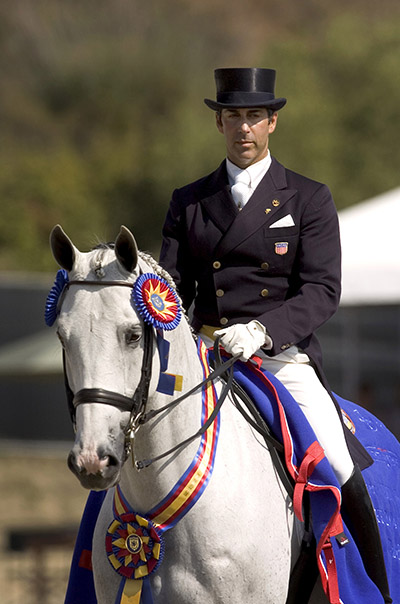
I encourage you to look at the roadmap for your life and your goals in three ways:
• Determine your goal for each day. When I get on my horses or begin a lesson with a rider, I already have my plan in place to achieve a successful outcome. With a horse, I have a warm-up that loosens the animal and prepares him for the next part of a training session: the gymnastics.
Gymnastics entail what I call the “Rubber Band Exercise,” which ensures the horse is able to properly lengthen and shorten his frame and strides from back to front (longitudinally) with harmonious half-halts. With the half-halts coming nicely through, I move on to the “meat” of my lesson, in which I work on the predetermined exercises or movements I wish to improve in the horse that day. Successfully achieving my goal, I finish the session by once again loosening the horse and giving him a final stretch and a big pat on the neck and sugar for being so great that day. The point here is to make it clear that I do nothing without a plan for success, day to day, month to month, and year to year. I would use the exact same process I just described for training a dressage horse to achieve success in any sport, art, or business endeavor.
• Determine your short-term goals. When I worked with the Canadian and US Olympic Teams and their national federations, I created four-year plans with markers for each year that I drew out specifically to ensure successful championships, resulting in medals. Having done this for myself as a competitive rider, it was not hard to create roadmaps for these teams. In 2012, before I was hired to be Technical Advisor/Chef d’Equipe for the US Dressage Team, I wrote and shared a post that said if need be, I would drag the entire country, kicking and screaming, to the medal podiums at the upcoming Olympics in Rio de Janeiro. Fortunately, everyone involved with our Team was (and is) so fantastic that we were truly a village with the same goal and desire to achieve our goal. And that is exactly what happened. Practically every marker I had set on the roadmap, we met or exceeded.
• Determine your long-term or life goals. Say to yourself, “Here is where I am, and there is where I wish to be at the pinnacle of my life.” This requires acknowledging your daily and short-term goals and meeting them (or not) over the days, months, and years you spend pursuing your bigger dream. Long-term goals may change as you evolve. I was sure I was going to be a veterinarian when I left for college, but one semester of organic chemistry and physics made it clear to me that my brain was not made for that kind of thinking. Rather, philosophy and English were both easy for me to excel in. Of course, ultimately, who I became was based on my greatest passion: horses!
Follow your passion, and set achievable and yet lofty goals, and you will be on your own roadmap to success.
This excerpt from The Gates to Brilliance by Robert Dover is reprinted with permission from Trafalgar Square Books (www.HorseandRiderBooks.com).
You can find more interesting reading in our section on Books.






